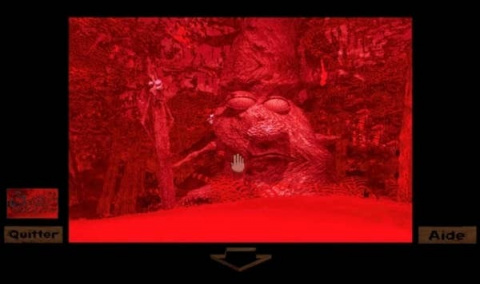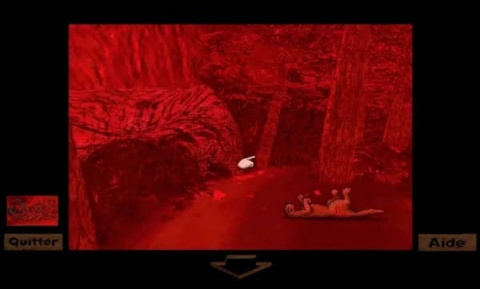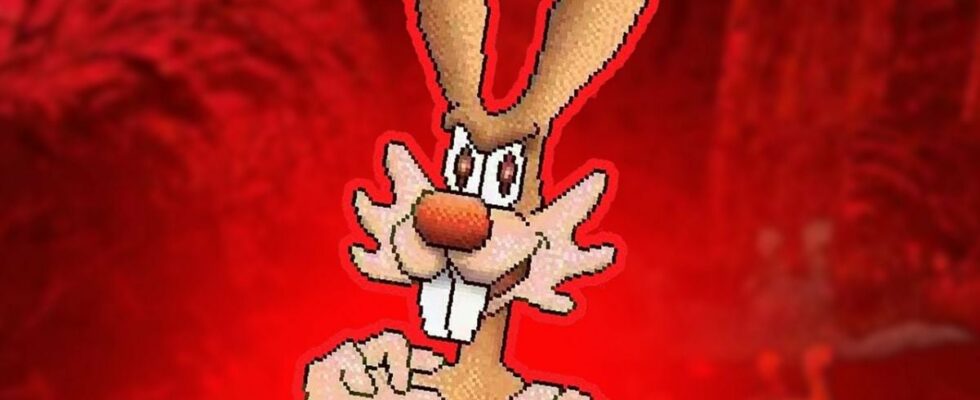Game news “It terrified me when I was little”, this Adibou-style video game is involuntarily the trauma of an entire generation
At the end of the 90s, educational games were particularly popular on PC. Among all these titles aimed at children, there are some that have left their mark on many young players… but not for the right reasons. A look back at a real generational “trauma”.
With the development of the internet, tablets and free applications, we can’t say that educational games on PC are as popular as they were in the late 90s, even in the early 2000s. However, it is a part of the history of video games which has marked an entire generation of players of which I am a part. Just reading the names of Adibou, Pouce-Pouce, Marine Malice and Pajama Sam brings stars to my eyes. But among all these titles aimed at little ones, there are some that really don’t evoke good memories for me: Forestia. And according to the internet, I am far from being the only one in this situation.
Forestia, a hiking simulator for children
To put things in context, Forestia is a point’n’click released in 1998 on PC and Mac which presents itself as a hiking simulator with a first-person view. The title is an adventure aimed at children aged 7 to 12 in which we explore the forest of PapyChêne, a talking tree, and his friends. If the young player can walk around freely, the experience mainly offers several levels with their own little intrigues which often involve solving the problems of animals and fantastic creatures of the forest. This gives rise to awareness and memorization games to familiarize children with video games. Most of the time, the young player is accompanied by Sam the Rabbit who guides him through the forest to put together an album, a herbarium and an encyclopedia which are enriched throughout the adventure.
By its many qualities, Forestia quickly became a benchmark for educational games on PC, as did Adibou. You only need to see its score on SensCritique of 8.1/10 to understand that the title is a real success which amazed and entertained many children of the 90s and 2000s. And the most impressive thing in all of this is that the game was created by the French studio Daddyoak then composed of only four members: Hervé Antony, Stéphane Pruvost, Jacques Champigny and Luc Éléouet. Following the success of this first draft, three other games will subsequently be released: Forestia Junior, Forestia Révoltozoo and Terra Forestia: The Pygmoli Mystery. Nevertheless, it is the original game which remains the most memorable, both for good memories and for a passage which terrorized all the children of the time.
The Mountain of Fire, a generational trauma
To access one of the adventures offered by the game, you must first select the object that corresponds to it. On the screen presenting these different elements, a sort of red crystal stands out from the others. By clicking on it, the player finds himself transported to the level titled Mountain of Fire. And here is the drama.

After a loading time, Sam the Rabbit invites us to join him in a tower to observe the dragon constellation before going to bed. Once awake, the player discovers the forest entirely red while oppressive music plays, with disturbing sounds of birds in the distance. As the dragon passes in front of us, the voice of an animal locked up and gone completely mad calls out to us. On the road to join the dragon, the forest seems more terrifying than ever. Arriving at a waterfall, the winged creature appears and asks us in a deep voice to go and recover the crystals from the hands of a sorcerer who caused this nightmare. While exploring, we discover Papychêne and his birch friend with their eyes closed… even rolled back with the imagination of a child. After walking past a seemingly dead otter, a bird transforms into a spirit and attacks the screen directly, like a jumpscarebefore we come across a damaged version of Sam the Rabbit.
After seeing the soul of an animal separate from its body, the player finds the temple from which the evil sorcerer emerges, with his terrifying hooded figure, who flees transforming into a crow, accompanied by a noise deaf. To reach the top of the building, you pass a skeleton tied by the hands to whom you can speak. Once at the top, if the player does not reproduce the correct combination to organize the crystals, the image twists, the evil sorcerer threatens us directly, jumps on the screen in the form of a spirit before a volcanic rock falls in our face. But if we succeed, we wake up in a peaceful forest and Sam the Rabbit tells us that it was only a dream, that we had a restless sleep and that dragons do not exist… before one does not fly over the sky.
“The scariest thing from my childhood”
Faced with such a nightmarish sequence, we understand why this level affected so many children of the time. While the whole game is bathed in a good, joyful atmosphere, this shift into a worrying atmosphere is unexpected., especially in an experience aimed at young people. The feeling of surprise reinforces the striking aspect of this passage which became a trauma for many children of the time who did not expect it. In the comments of the gameplay video, we observe that the lexical field of fear is omnipresent. “It’s the scariest thing about my childhood, I think“, “This part of the game = the trauma of an entire childhood!“, “It TERRIFIED me as a kid“, “After 10 years, I’m still afraid of this level…. Especially when we see the dead animals, I cried in terror“: Very clearly, the game could have been included in the Iceberg of Feldup’s childhood traumas.

Taking into account all this feedback, one wonders what such an oppressive sequence is doing in a child’s game. Clearly, this adventure seems far too disturbing for an easily impressionable audience. To understand what the developers wanted to do in this level, we can read in the comments of the YouTube video that user @TheLartek claims to have contacted one of the creators. Here is what Hervé Antony would have replied to him:
This part of the game takes place at night and in the world of the night, we all know nightmares, both children and adults. During this part of the game, it’s a nightmare, but there are no dead animals, they’re just petrified. At the end of the level, the player wakes up and everything is back to normal. Some kids got a little scared, but we never had any complaints or problems, it was just a concept about nightmares.
It’s certain, the developers of Forestia have perfectly succeeded in their objective of transcribing a nightmare, because this is how all the young players of the time experienced it. Unfortunately for some, the fear felt when facing Mountain of Fire eclipses their fond memories of the title, even though it is one of the best educational games of its time.
